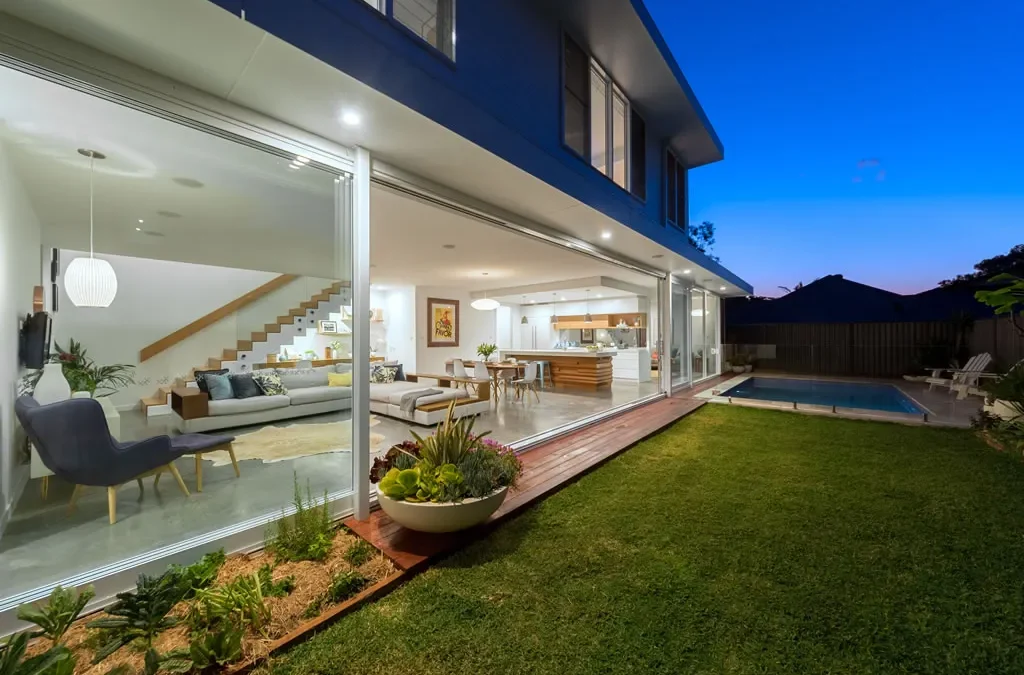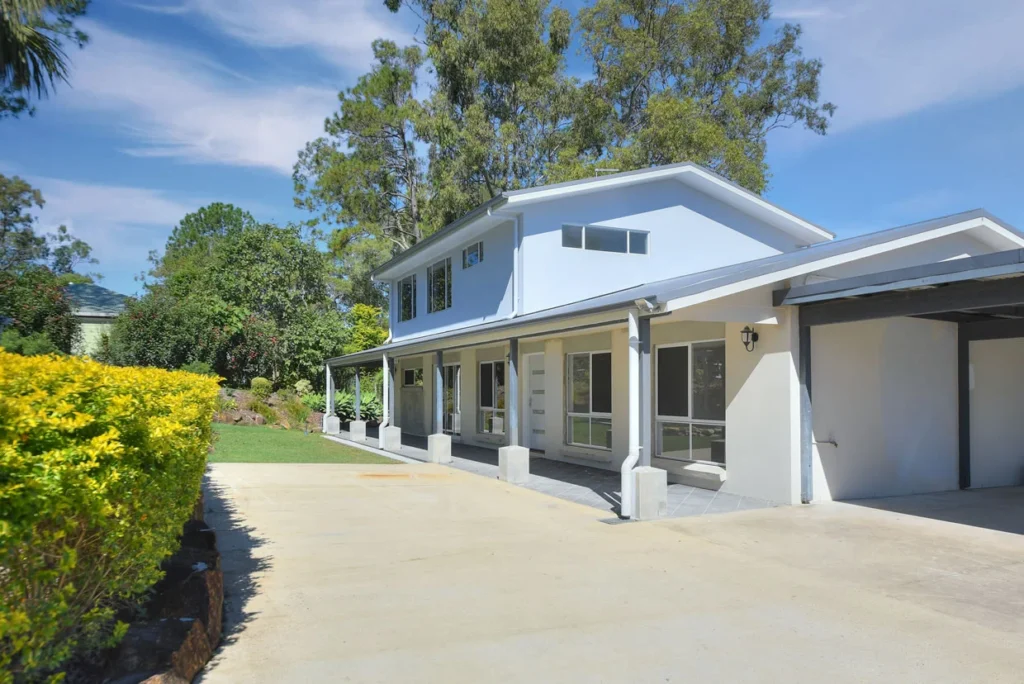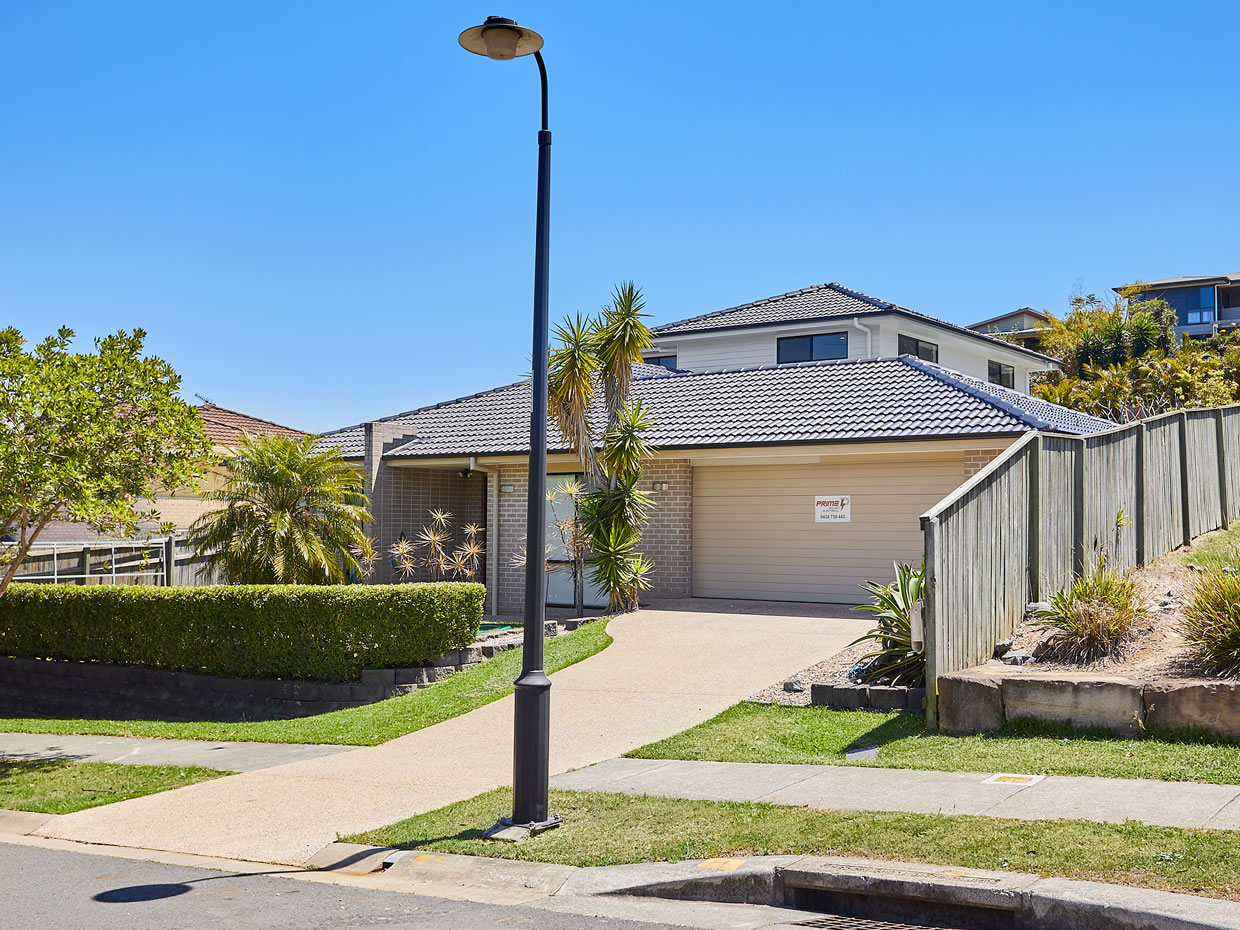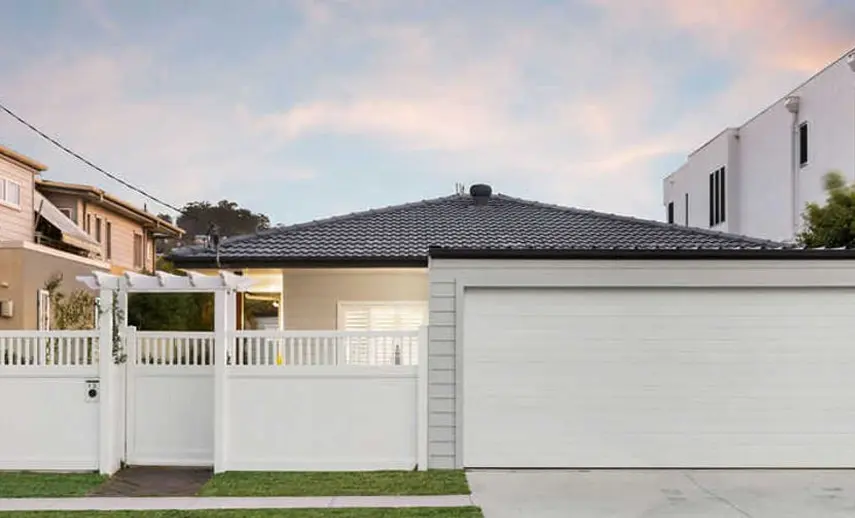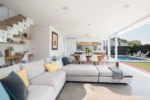🔥Second Story Addition Cost Guide and Why Some Builders May Not Tell You the Real Prices.
Second-storey addition costs vary widely, ranging from $200,000 to over $800,000, depending on your location and specific requirements. Our detailed cost guide will guide you through the entire building and construction process, leaving very little to your imagination. Experience is your key to further building success. Now, onward and upward with your second storey addition 🙂
Adding a second story to your home costs between $350,000 and $800,000, depending on size, location, and finishes. Many homeowners go over budget because of unexpected costs that builders often don’t disclose upfront.
The cost of second storey addition varies based on the scope of the project. A simple second-storey extension (60-80m²) costs $350,000 to $550,000. Luxurious additions over 120m² can cost $800,000 or more. The Australian market starts at $400,000. Sydney’s premium prices range from $550,000 to $800,000, whilst the Gold Coast can tip just below $400,000.
These numbers are just a portion of the total cost. Your design fees will be 3-7% of the total budget, so $9,000 to $21,000 for a $300,000 extension. Materials make up 30-40% of the funds. The real challenge is the hidden costs that are not reflected in the original quotes.
This article breaks down your expected costs for adding a second floor to your home in 2025. You’ll learn about the costs builders often minimise and how to manage your budget effectively.
What is the cost to add a second story in 2025?
Second-storey additions will be a big-ticket item for Australian homeowners in 2025.
Builders say you’ll need $4,500 to $7500 per square meter. These prices show what it takes to build up instead of out.
Cost ranges by project size
The total cost of your second-storey project depends on its size and scope. Here’s what the current market data shows for different project sizes:
- Small addition (60-80m²): $325,0000 – $545,000
- Medium addition (80-120m²): $390,000 – $850,000
- Large addition (120m²+): $580,000 – $1,250,00+
A small second-floor with one or two bedrooms and an ensuite will cost you between AUD 385,000 and AUD 600,000 (all up, including drawings and council approval). If you want a full second storey with 3-4 bedrooms and a bathroom, expect to pay from AUD 546,000 to AUD 880,000.
Some builders offer a wider range of prices. They start at $4,000 per square meter for simple projects and rise to AUD 21,500 per square meter for very complex, high-end second stories.
Please note that it’s not the norm, but a major renovation, including the ground floor, adding a second floor, and expanding out, can range up to AUD 1,350,000 for a complete rebuild.
Basic vs. high-end finishes
Material quality and finishes have a significant impact on your final cost. Most people don’t realise how much these choices affect the overall price.
Simple second-storey additions use standard materials like:
- Laminate benchtops instead of natural stone
- Vinyl flooring rather than hardwood
- Standard aluminium windows versus custom-designed glazing
High-end finishes can add 20-40% to your construction costs.
Premium features that drive up prices include:
- Staircases: An enclosed MDF staircase with painted timber balustrade costs less than an open-tread timber on steel spine with glass balustrade
- Ceiling heights: Standard 2.7m ceilings cost less than soaring cathedral designs (which add $15,500 to $47,500)
- Bathroom finishes: Simple tiles and standard fixtures versus floor-to-ceiling designer options (adding $12,000 to $29,000)
Smart planning helps cut costs. You can save money on materials and labour by putting new bathrooms above existing plumbing.
Regional price differences
Your location plays a BIG role in determining your budget. Here’s how second storey addition costs vary across Australian cities, as per what we’ve learned on previous jobs and other building companies alike:
| City | Starting Cost (AUD) | Premium Range (AUD) |
| Sydney | $450,000 | 550,000 – 920,000 |
| Melbourne | $425,000 | 520,000 – 860,000 |
| Brisbane/Gold Coast | $420,000 | 490,000 – 725,000 |
| Perth | $380,000 | 390,000 – 630,000 |
| Adelaide | $345,000 | 400,000 – 680,000 |
Several factors create these price differences. Metropolitan areas have higher labour costs because skilled tradespeople are in high demand. Remote locations incur higher costs due to transportation.
Each local council has its own planning rules and approval process. This can cause projects to take longer and require more paperwork. Building in cyclone-prone areas needs stronger engineering solutions, which adds to the cost.
Key factors that influence second-story extension cost
The actual cost of your second-floor extension goes way beyond the basic price tag. You need to know what affects these costs to avoid budget overruns and keep your expectations real.
Size and layout complexity
The size of your project will be the biggest factor in your budget. Industry data show that larger projects require more labour and material. Costs typically range from $2,800 to AUD 25,000 per square meter.
A small space with multiple rooms may be more expensive than a larger, open area. This is especially true for wet areas like kitchens, bathrooms, and laundries. These spaces function like mini-houses and require specialised electrical, plumbing, waterproofing, and tiling work. Adding one bathroom or kitchen will cost more than adding bedrooms or living areas.
Material selection and quality
Your choice of materials is a big cost factor that eats up 60% of your total budget
Here’s the difference in material costs:
- Lightweight timber frames cost @$250-$350 per square meter – much cheaper than steel options
- You’ll save big by choosing laminate countertops instead of natural stone (AUD 6,000+ per slab)
- Vinyl flooring beats hardwood, and standard aluminium windows cost less than custom-designed glazing or insulated double-glazing.
Structural reinforcements needed
Many people overlook the cost of preparing their home for an extra level. You’ll need a structural assessment to check if your foundation can take the weight. This step prevents expensive surprises during construction.
Reinforcing the foundation typically costs between AUD 20,000 and AUD 150,000. Full underpinning ranges from $37,500 to $120,000. You might find cheaper reinforcement methods that work just as well, but this is your builder and engineer’s call on the proposed reinforcement option. Again, the more experience the building contractor has, the better the options available to you.
Access and site conditions
Your property’s accessibility has a direct impact on your budget. Hard-to-reach properties require special equipment, such as cranes, and specialised materials, which adds to labour costs. Urban sites with limited space face greater challenges than rural properties, which often have ample room for materials and equipment.
Sloping blocks require additional earthworks and may necessitate retaining walls or specialised foundations. Projects on challenging terrain tend to cost more than those on flat, easy-access properties.
Council approvals and permits
The cost of following regulations often catches people off guard. Permit and plan review fees range from $3,000 to $12,500, depending on your location and the building you are constructing. Each state in Australia has its own building codes and approval process. Some local councils have height restrictions, which may force design changes. Heritage overlays can add around $15,000 to compliance costs. Properties in flood zones or bushfire areas are subject to additional rules that affect design and materials, and this is where fire rating products are stipulated, adding considerable costs of up to 20% to your overall budget.
A professional structural assessment and engineering design will cost $4,500 to $12,500 upfront. This investment helps avoid costly surprises and ensures your project is safe and compliant.
Breaking down the cost of a second storey
Let’s break down the financials of a second-storey addition to help you avoid budget blowouts. Here’s a detailed breakdown of where your money goes during this major home renovation project.
Design and planning fees
Professional services will account for 5-10% of your budget before the commencement of construction. You should budget between $12,500 and $35,000 for architects and designers on a $460,000 addition. This initial investment may seem expensive, but it helps prevent mistakes during the construction process.
You’ll need to spend between $2,500 and $4,500 on structural engineering fees to ensure your existing structure can safely support an additional level. Council approvals and permits add 2-5% to your budget, and these costs can vary greatly depending on your location and project scope.
Construction and labour costs
The physical construction accounts for the largest portion – approximately 60-70% of the total costs.
Here’s how it breaks down:
- Structural work: 15-20% of your budget
- Labour: 25-40% of total costs
- Materials: 30-40% of funds or 60% high detailed bespoke builds
Material prices can vary quite a bit depending on quality:
- Timber framing: $230-310 per square meter
- Steel framing: $310-460 per square meter
- Roofing: $125-160 per square meter for standard tiles
- Windows: $1,500-4,600 each for double-glazed aluminium options
Support equipment is another significant expense, typically costing $3,000 to $6,250, plus weekly hire fees of $380 to $650.
Plumbing, electrical, and AC Service extensions make up 10-15% of your budget. Your current electrical and plumbing systems weren’t designed to handle a second level, so they’ll need to be upgraded. This involves extending pipes, adding new electrical circuits, and possibly upgrading your electrical switchboard, all of which are necessary to comply with the ever-increasing Australian standards.
Kitchens and bathrooms push costs higher because they function like “mini-houses” that require specialised electrical, plumbing, waterproofing, and tiling work. Builder contractors are aware that these wet areas significantly contribute to the costs of second-storey additions.
Interior and exterior finishes
You’ll spend 20-25% of your total budget on interior finishes (plasterboard, flooring, paint) and exterior elements (cladding, guttering, windows). These costs can vary greatly depending on material quality and design complexity.
A recent 87m² second-storey addition in Pacific Pines (Gold Coast) cost a total of $394,146. The project featured a distinct breakaway zone for their three kids, three additional bedrooms, a spacious bathroom, and a media room.
Contingency and hidden costs
We recommend keeping 10-20% of your budget for contingencies. This means having an additional $62,000 to $124,000 for a total of $620,000.
Structural surprises pop up once construction begins. Your home may need extra foundation reinforcement or support beams beyond the original estimates. Temporary relocation can cost more than AUD 15,289.90 if you need to move out during the construction period.
Here are some costs people often forget about:
- AC system upgrades to handle the extra living space
- New staircase construction, with costs varying widely depending on design and materials
- Service upgrades like bigger electrical panels or larger hot water systems
The true cost of a second-storey addition goes way beyond the reach and influence of basic construction prices. Understanding each cost component and maintaining a solid contingency fund will help you prepare more effectively for this major home improvement investment.
What some builders neglect to tell you about second-storey additions
Homeowners who start second-storey addition projects often find surprises along the way. The glossy brochures and optimistic timelines don’t tell the whole story. Significant information stays hidden until it’s too late.
Unexpected structural issues
Builders find surprises when they open up your home. These issues weren’t visible during the original inspections. In load-bearing walls, there is a need for immediate fixing, which can result in termite damage or rot, adding $7,500 to $25,000 to your project. Another reason to worry – inadequate footings. This common surprise sometimes requires complete foundation reinforcement, which can cost more than $5,000.
Homes built before 1990 face a big shock with asbestos removal. Professional asbestos cleanup costs $80 to $150 per square meter. Disposal fees add approximately $1,520 for a standard skip bin. Your electrical system may also require mandatory upgrades. A new switchboard alone starts around $2,300.
Temporary relocation costs
Builders might suggest otherwise at first, but living in your home during major second-storey construction is neither safe nor practical. Living expenses can add up fast. A comparable rental property typically costs $3,100 to $6,150 per month for temporary accommodation. Ref: SQM Research – Capital city average rent
Your relocation expenses include:
- Moving costs: $1,500 to $3,000 (two moves – out and back in).
- Storage fees: $260 to $600 per month for furniture and belongings, and up to $800 for larger units. (ref: Swift Storage.)
- Increased commuting expenses: variable based on location
The biggest problem? Where we’ve sometimes seen estimates of 3-4 months for construction, A Great Builder contractor typically suggests an estimate of up to six months, which we consider to be on par. However, projects can last anywhere from 6 to 9 months. This is a significant concern, as it means your temporary living costs could double if you were with a contractor who quotes a 3- to 4-month window and unforeseen building issues, such as termites or structural problems, delay progress or completion.
Delays due to weather or council permits
Whatever your planning level, construction delays happen. Weather disruptions affect 40% of all second-storey projects. Each rainy day incurs additional costs of $625 to $1,250 for equipment rental and contractor scheduling.
Council approvals create similar headaches. Projects face holdups even after initial approval. Building inspections at key construction stages bring unexpected requirements. These problems are systemic and add 3-8 weeks to 30% of projects.
Supply chain issues now result in longer wait times for materials. Lead times for specialised components have jumped from 2-3 weeks to 8-12 weeks. The most extensive longitudinal study shows most second-storey additions take 25-40% longer than scheduled.
Scope creep and contract variations
Scope creep is the primary cause of budget overruns. Small changes add up fast. The average second-storey addition incurs 15-25% cost increases due to variations.
Builders’ Contract allowances need special attention. Builders often set minimal allowances for fixtures and finishes. To name just one example, consider flooring at $45 to $80 per square meter, when the actual costs might be two or three times higher. However, this is client-dependent and not concrete.
Research shows that half of homeowners exceed their budget for a second-storey addition by at least 15%. Almost 25% exceed it by 30% or more. Understanding what it all means before you begin helps avoid the financial stress that comes with many second-floor projects.
How to reduce your second-story extension cost
Want to cut costs on your second-storey addition without compromising quality? Thoughtful planning and the right choices can help you save a lot of money on your project. Expert builders have explained proven ways to keep your second-story extension budget under control and can provide a proven formula that works for your entire project.
Use standard materials and sizes.
You can slash expenses by choosing off-the-shelf products instead of custom-made items. Standard-sized doors, windows, and fixtures usually cost half as much as custom ones. You’ll end up less overall by picking readily available materials like plasterboard walls, standard flooring, and simple light fittings.
Budget-friendly finish options include:
- Laminate benchtops instead of natural stone
- Vinyl flooring rather than hardwood
- Standard aluminium windows versus custom-designed glazing or double-glazed windows
You can find stylish yet budget-friendly lighting fixtures that don’t break the bank. Sometimes, materials from the existing structure can add character and help you save money.
Opt for prefab components.
Prefabricated and modular construction methods have revolutionised second-storey additions. These factory-built components can save you 10-40% compared to traditional building methods.
Prefab benefits include:
- Factory environments ensure precise specifications
- Construction time drops by about 40%
- Weather delays become less of an issue
- Labour costs decrease with less on-site work
Gold Coast builders increasingly welcome prefabricated second-storey extension components (roofing and wall framing structures) because teams can assemble them on-site in just a few days—much faster than traditional methods.
Line up new plumbing with existing lines
You can save money by placing new bathrooms or kitchens directly above existing ones. This setup reduces the need for extra plumbing lines and electrical circuits, resulting in lower material and labour costs.
Smart plumbing placement offers several benefits:
- Lower labour costs with less specialised work
- Fewer connection points mean less chance of failure• Water heats up faster with shorter pipe runs
- Shared vent stacks simplify ventilation
Simplify the design
Complex designs can quickly blow the budget. Simple designs that match your existing house are less expensive to build and easier to create.
Box-style designs are the most cost-effective. Designs with custom rooflines, balconies, voids or architectural curved features can get expensive. Open-plan designs can save about 20% compared to multiple small rooms, as fewer walls mean less material and work.
A simple design doesn’t look boring. Work with your designer to create a look you love while keeping it simple and elegant.
Be your own project manager (if you can)
People with organisational skills and time can save 10-15% by managing their own project. This means coordinating trades, ordering materials, and keeping the construction on schedule. In some cases, this can prove advantageous, but be aware that you’ll need to be thick-skinned and keen on detail.
You can save more by doing some tasks yourself:
- Painting interior walls
- Basic landscaping
- Miscellaneous interior finishes
This approach requires careful consideration – leave structural work, plumbing, and electrical work to the professionals to avoid costly mistakes. Note that delays caused by inexperienced management can wipe out any potential savings.
Hiring a contract builder who specialises in second-storey additions often makes sense. Their expertise can help you save money through efficient planning that maximises space and minimises costs.
Real examples: Second-storey addition in Pacific Pines
Ground examples are a great way to get a sense of the actual cost of second-storey additions. Let’s take a look at actual projects that homeowners have done in Australia.
Case study: 87m² addition in Pacific Pines
Our Project property in Pacific Pines shows what’s possible with thoughtful second-storey planning. The house was bought for AUD 540,000 in 2020 and added an 87m² second level. The new floor featured a breakaway zone for their three kids, three additional bedrooms, a spacious bathroom, and a media room. The exterior got a modern look with vertical Weathertex cladding (150mm EcoGroove Smooth).
Cost breakdown and timeline: They spent AUD 394,146 on the Pacific Pines addition. These costs align with other documented projects of similar scale.
A larger single-level project in Burleigh Heads cost AUD 733,915. The breakdown for the custom-built home was:
- Structural work: AUD 75,218
- Labour: AUD 223,234
- Materials: AUD 420,174
- Permits: AUD 15,289
Most projects take 4-6 months to complete. The custom-built project took about 7 months.
Lessons from real homeowners
The most successful projects share common elements: detailed planning, effective communication with the builder, and realistic expectations. The Pacific Pines project proves the value of these additions – the property has more than double its original value.
Homeowners say:
- Get a complete picture before construction stops, or surprises from getting expensive
- Keep 15-20% extra funds for unexpected costs
- Builders often find specific acoustic and structural requirements during construction
Conclusion
Second-storey additions are a big investment that requires careful planning, realistic budgets, and thorough preparation. This article reveals the actual costs behind these major renovations and exposes figures that builders often downplay or overlook.
You should be aware of all the cost components before starting your project. Your total cost includes design fees, structural requirements, material choices and labour costs. Additionally, temporary relocation, permit delays, and unexpected structural issues can significantly exceed the original estimate.
Price differences are huge between regions. Northern Rivers vs Gold Coast charges premium rates, while other Australian cities have lower pricing. Regardless of that, quality finishes and complex layouts will cost more wherever you are.
Experienced homeowners recommend keeping 15-20% as a buffer. This will cover almost all scope changes and surprise costs during construction. More than half of second-storey addition projects cost at least 15% more than planned.
You can save without sacrificing quality. Standard materials, prefabricated components, new plumbing that aligns with existing lines, and simple design layouts are ways to cut costs. Managing your own project might cost less, but you’ll end up spending lots of time and needing strong organisational skills.
Ground examples show both the challenges and rewards of second-storey extensions. Savvy owners from Pacific Pines saw their property values skyrocket. This proves that well-done additions pay off big time despite the upfront cost.
Take your time to learn, talk to multiple builders and create detailed plans before you start your second-storey addition. Your project’s success depends on realistic expectations, thorough preparation, and sufficient financial flexibility to handle unexpected surprises along the way.
Key Points
Understanding the actual costs and hidden expenses of second-storey additions will save you from budget blowouts and project delays.
- Second-storey additions cost $300,000-$800,000+ in Australia, with the Gold Coast charging premium rates of $490,000-$725,000 for quality projects.
- Builders rarely mention upfront hidden costs include structural surprises ($7,600-$22,900), temporary relocation ($3,000-$6,100/month), and permit delays extending timelines 25-40%.
- Set aside 15-20% contingency funds, as more often than not, homeowners go over budget by at least 15%, with scope creep being the biggest budget killer.
- Save costs by using standard materials, aligning new plumbing with existing lines, choosing prefab components and simplifying design layouts without sacrificing quality.
- Strategic planning pays off—well-done additions can double property values, but success requires realistic expectations and complete preparation for the surprises that will happen.
The key to a successful second-storey addition is understanding all the cost components upfront, having financial flexibility and working with builders who specialise in vertical extensions.
The Risen Difference
Craig Preston, Master Builder on the Gold Coast
Risen Developments delivers stress-free second-storey additions that are among today’s valuable home improvements. Our 30 years as the Gold Coast’s and-story specialists help families expand their homes while securing strong investment returns.
Quality second-storey additions start with the right builder. Our no-nonsense building process combines careful planning, structural knowledge, and professional execution. Family needs shape every project decision, ensuring results that meet our highest standards.
Second-storey additions give you more than just extra space. Your property value increases by 50% while you maintain your preferred location and outdoor spaces. Our proven approach ensures structural integrity and lasting quality throughout the construction process.
The next step is to contact us about your second-storey plans. Let our expertise guide you toward your expanded dream home.
We’ll bring your vision of a perfectly executed second-storey addition to life.
Our master builder, Craig, will be happy to chat with you at 0404 736 688. Feel free to email us online to receive personalised advice tailored to your unique needs and aspirations. With the proper support, adding a second level to your home can be an enriching experience that breathes new life into your abode, making it an endeavour worth considering. When looking for a home addition on the Gold Coast, or are you curious about the council’s requirements? Please click to review Gold Coast council building applications.
# All photos and illustration artwork(s) are trademarked and intellectual property of Risen Development.
* Disclaimer: – * All costs displayed are for reference purposes only. It would be best to obtain a firm quotation for any project size.
🏡 Frequently Asked Questions
What is the typical cost range for adding a second storey in Australia in 2025?
The cost of adding a second storey in Australia in 2025 typically ranges from AUD 200,000 to over AUD 800,000. The exact cost depends on project size, location and quality of finishes. In premium markets like the Gold Coast, costs can range from AUD 470,000 to AUD 720,000 or more for high-quality additions.
How much should I budget for surprises when adding a second storey?
Set aside 15-20% of your total budget for contingencies. More than half of second-story addition projects exceed budget by at least 15%. Surprises can come from structural issues, permit delays or upgrades to the existing system.
How can I reduce the cost of a second-storey addition?
To save costs, use standard materials and sizes, not custom, prefab components, new plumbing that lines up with existing lines and simplify the design layout. These will save you lots of money without sacrificing quality.
How long does a second-storey addition take?
The average time to complete a second-storey addition is 4-6 months. However, delays due to weather, permit approvals or unexpected issues can add 25-40% to the timeline. Many projects take longer than scheduled.
Are there any hidden costs I should be aware of when planning a second-storey addition?
Yes, there are. Temporary relocation costs (AUD $ 3,000-$6,100/month), structural surprises (AUD $ 7,600-$22,900), upgrades to existing systems such as electrical panels, solar or AC, and project delays that result in extra equipment rental and labour costs.
🙂↕️Looking for related Second Storey topics we’ve covered?
Elevate Your Living: Expert Tips for Second Storey Home Additions in 2025
🔥 Second storey home additions can increase their value by fifty percent*. This ranks among the...
Smart Parents’ Blueprint: Renovating a House Without Losing Your Sanity
One thing is how not to lose your sanity while renovating a house; add kids, and it's a recipe...
A Stepped Guide to 2nd Floor Additions to a House
🔥 If you're considering adding a second floor to your house, read on to see how our...

